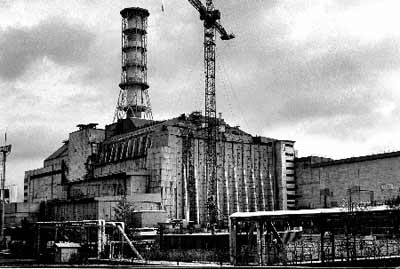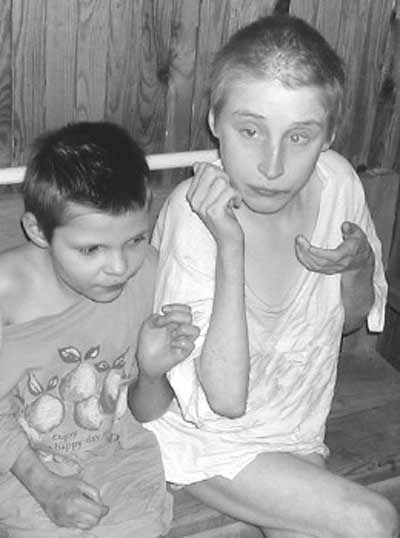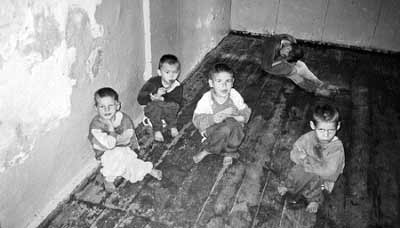Chernobyl, Ukraine
- Potentially Affected People: Initially 5.5 million, now disputed numbers.
- Type of Pollutants: Radioactive dust including uranium, plutonium, cesium-137, strontium, and other metals
- Source of Pollution: Meltdown of reactor core in 1986
The Problem
The world's worst nuclear disaster took place on April 26, 1986 when testing in the Chernobyl power plant, 62 miles north of Kiev, triggered a fiery meltdown of the reactor's core. Thirty people were killed in the accident, 135,000 were evacuated, and one hundred times more radiation was released than by the atom bombs dropped over Hiroshima and Nagasaki. Twenty years later, the 19-mile exclusion zone around the plant remains uninhabitable.
Although an enormous amount of radiation was released during the disaster, most of the radioactivity has remained trapped within the plant itself. Some estimate that more than 100 tons of uranium and other radioactive products, such as plutonium, could be released if there is another accident. Chernobyl is also thought to contain some 2,000 tons of combustible materials. Leaks in the structure lead experts to fear that rainwater and fuel dust have formed a toxic liquid that may be contaminating the groundwater.
Health Impacts
From 1992 to 2002 in Belarus, Russia and Ukraine more than 4000 cases of thyroid cancer were diagnosed among children and adolescents, those under 14 years were most severely affected. Most of these cases have been attributed to elevated concentrations of radioiodine found in milk. More than five million people currently inhabit the affected areas of Belarus, Russia, and Ukraine, which have all been classified as 'contaminated' with radionuclides credited to the Chernobyl accident (above 37 kBq m-2 of 137Cs). Skin lesions, respiratory ailments, infertility and birth defects were the norm for years following the accident.
A recent WHO report has indicated that the expected impact on future generations from radioactivity is now quite low. However, this report has been met with scepticism from some local and international experts.
Status of Clean-Up Activity
Within several months of the accident, the reactor was enclosed in a concrete casing designed to absorb radiation and contain the remaining fuel. However, the sarcophagus was meant to be a temporary solution and designed to last only 20 or 30 years. A program to further secure the site is underway.
Researchers have carried out studies on health impacts, remediation effects, and the socioeconomic status of the region surrounding Chernobyl. Plans exist for the 19-mile exclusion zone to be recovered for restricted industrial uses. However, an appropriate environmental impact assessment needs to be finished before that can happen and an integrated radioactive waste management program needs to be put in place before further development. Estimates for remediation projects have been projected at hundreds of billions of dollars. To date, the costs of the cleanup have placed significant financial burdens on Belarus, Ukraine, and Russia.
Given its resounding infamy and despite the subsequent progress that has been made at this site, Chernobyl is included in the Top Ten list due to its residual environmental impact as well as its potential to further affect an extensive region and population.
Resources
IAEA International Atomic Energy Agency. "Chernobyl's Legacy: Health, Environmental and Socio-Economic Impacts and recommendations to the governments of Belarus, the Russian Federation and Ukraine". The Chernobyl Forum: 2003-2005.
http://www.iaea.org/Publications/Booklets/Chernobyl/chernobyl.pdf
IAEA International Atomic Energy Agency. "Environmental consequences of the Chernobyl accident and their remediation: Twenty Years of Experience" Report of the Chernobyl Forum Expert Group 'Environment'. (2006)
http://www-pub.iaea.org/MTCD/publications/PDF/Pub1239_web.pdf
Johnson, Eric. Green Cross Switzerland. 12 December 2005.
World Health Organization. "Health Effects of the Chernobyl Accident and Special Health Care Programmes". Report of the UN Chernobyl Forum Expert Group "Health" (2006).
Additional Photos
 |
The reactor disaster in Chernobyl took place on April 26, 1986. The reactor was encased as a temporary solution to secure the site for only 20-30 years. Photo Credit: Julien Behal/Chernobyl Children's Project |
 |
Mentally handicapped children exposed to radiation Photo Credit: Alex Emes/Blacksmith Institute |
 |
Twenty-one years after the disaster, abandoned mentally and physically handicapped children are being found and taken in by orphanages. Photo Credit: Alex Emes/Blacksmith Institute |
 |
Children in Belarus, Russia and Ukraine have been suffering from the effect of the radiation released in April 1986. The Rechitsa orphanage in Belarus has been caring for the huge population of sick children. Photo Credit: Julien Behal/Chernobyl Children's Project |




